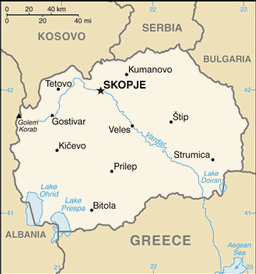Macedonia Measures Stimulate Birthrate
By SETimes
By Goran Trajkov
Macedonia has long been negatively impacted by declining birthrates, but recent government measures offering financial assistance to aspiring parents may stem the tide, experts said.
The measures, which are guided by Macedonia’s National Strategy for Demographic Development 2008-2015, include awareness-raising campaigns, parental allowance, child support and assistance for children with special needs.

“Nearly 1.4 million euros have been paid for child and parent assistance. In the first 11 months of this year, parental assistance was paid for 7,000 children,” the labour and social policy ministry said.
The government is particularly encouraging families to have more than two children, which will enable the population to exceed the 2.1 statistical boundary for simple reproduction. Consequently, it has provided 150 euros to families for every third child born. Mothers that have four or more children and are pensionless may now claim a pension at age 62.
“Awareness of the measures gave me and my husband the needed push to go ahead and have a third child, something we would not have otherwise decided to do. I am unemployed and certainly any assistance will be helpful,” Aneta Stamenkovska, 31, a Skopje resident who is pregnant with her third child, told SETimes.
Municipalities are getting involved as well. The Aerodrom municipality in Skopje is offering parents close to 100 euros in one-time assistance for a newborn child.
Meanwhile, the Macedonian parliament started a public debate on sustainable population policy at the initiative of the labour and social policy ministry. Proposed amendments to the Labour Law will provide greater protection for employed women if they give birth.
Following these efforts, the third quarter of this year saw the birthrate increase by 3.5 percent compared to the same period last year. If the trend continues at that rate, it will rein in the 6.3 percent decline in the 2011 birthrate.
The birthrate issue is similar throughout the region.
Serbia offers parental allowances for a first, second, third and fourth child, but the birthrate has remained at 1.4 children per woman.
In Croatia, for there are 70,000 fewer children from birth to 15 than people 60 and older, who number 760,000. The over-60 segment of the population is the fastest growing in the region.
Experts said the causes for the declining birthrate are a trend among women to postpone marriage and children, unemployment and lack of affordable housing. Parents that opted to have only one child said the most common reason for their decision is lack of time and money.
“[These factors] have provided a clear signal for the need of the state and local government to intervene and help shape the possibilities for establishing a marriage and family,” Jovan Pejkovski, demography expert at the Institute for Social Work and Social Policy in Skopje, told SETimes.
